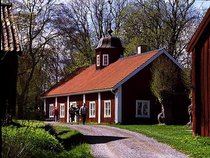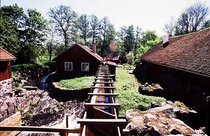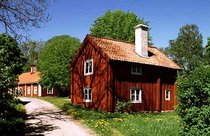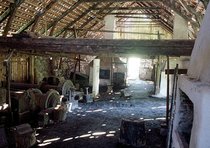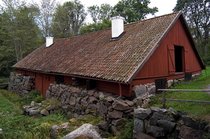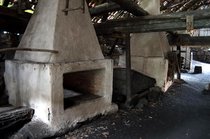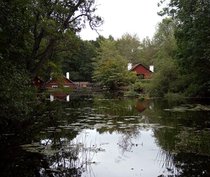Vira bruk
Vira was one of the leading weapon manufacturers during the period when Sweden was a major power. It was with rapiers from Vira that Karl XII’s soldiers fought at Narva and Poltava.
Privy councillor, admiral and war hero Klas Fleming took the initiative for the weapons smithy at Vira. The site was on land belonging to one of the many villages he owned. For 140 years starting in 1635, Vira enjoyed royal privilege, and from 1646 it had a monopoly for the supply of rapiers, sables and bayonets to the crown. Each year during the Great Northern War at the beginning of the 18th century, 120,000 blades were delivered.
Scythes and axes
During periods of peace, the smithys manufactured edged tools such as scythes, axes and knives. Thus it was that Vira became a leading manufacturer of scythes at the beginning of the 19th century.
The height difference between the lakes Viren and Losjön is about 13 metres, and this gave ample water power to drive the large hammers and heavy grindstones. A system of ponds and sluices allowed the water to be husbanded such that operation could continue all year round. And the location of Vira, close to Stockholm, was advantageous, since the completed weapons were destined to be delivered there.
The last smith
The tradition of iron working at Vira was kept alive after 1926 by a single man, the last smith, John Dahlgren. He worked in the small smithy until his death in 1948, aged 82. Dahlgren was the end of the line and the hammers at Vira fell silent after 300 years.
The iron works was extensively refurbished with the aid of government grants during the 1960s, and a museum was set up in the alderman’s cottage. This work was finished by the summer of 1970, and the old smithys could be opened to the public. At the same time, a workshop for artistic metalwork opened in the newly restored smithy, and a cafeteria and museum of everyday articles opened.
The smithys today
Only the large smithy from around the turn of the century at 1800 and the Dahlgren smithy from 1840 remain today. Several of the houses used as living quarters remain, together with a few of the many shops and storehouses that have stood here through the ages.
The oldest building in Vira is probably the courthouse, which is from the beginning of the 18th century. What is known as the “alderman’s cottage” and the “inspector’s residence” are from the 18th century, as are several other buildings.
Today, Vira bruk is managed by a foundation, whose goal is to allow the old ironworks to live on in the best possible manner. Thousands visit “Viraspelen” every summer, a festival of music and theatre describing life at Vira in the middle of the 18th century.

